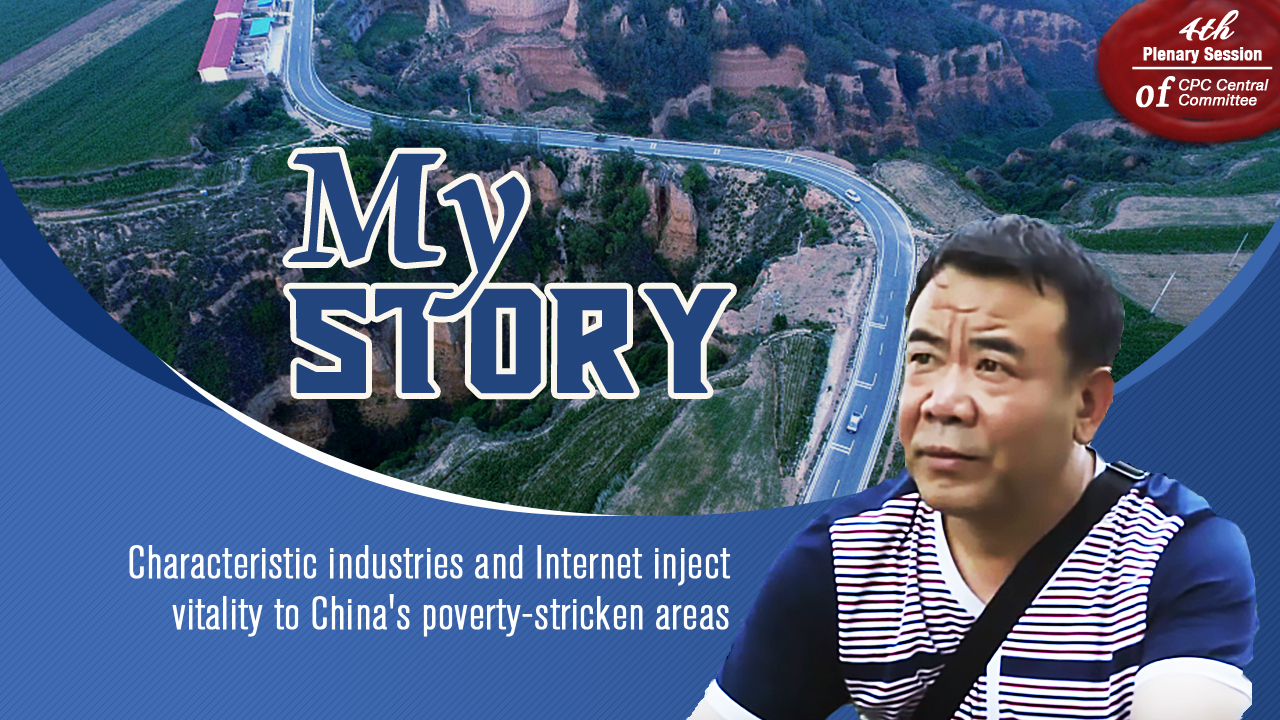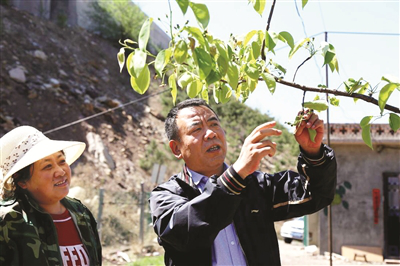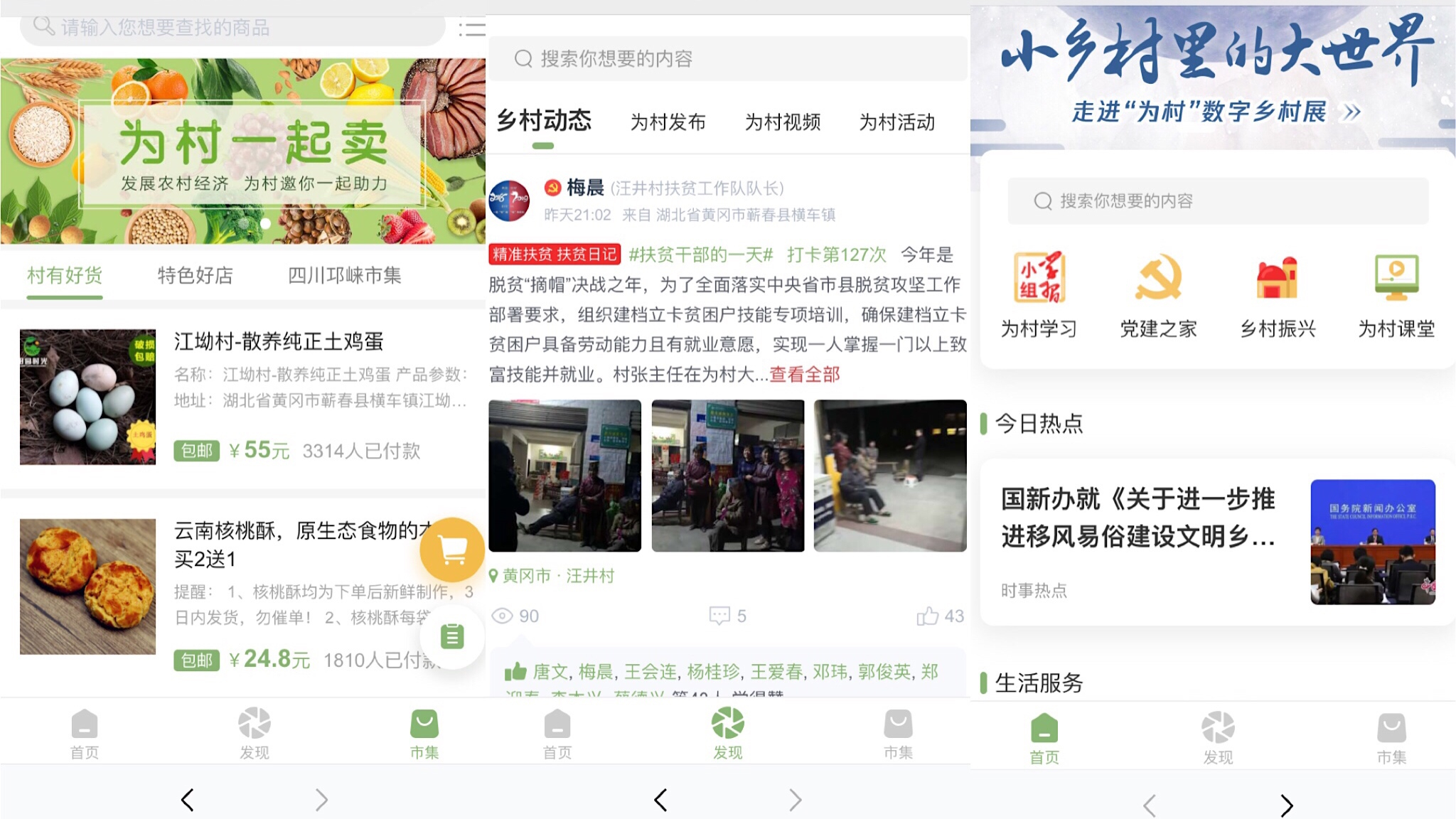02:46

Tan Yonggang, a poverty alleviation official of Huyu Village in Yangquan City, north China's Shanxi Province, had never thought his dream of lifting the underdeveloped village out of poverty would come true by developing a systematic pear-planting industry in the region.
In China's battle against poverty, Tan doesn't work alone. Since the 18th National Congress of the Communist Party of China (CPC) was held in late 2012, over 195,000 officials of the CPC have been assigned to impoverished villages to help rural residents overcome poverty as part of the country's targeted poverty alleviation efforts.
They brought new ideas to the villagers, injected vitality to the impoverished areas by introducing industries and new development methods with the help of the internet.
Characteristic industries boost development
China has set 2020 as the target year to eliminate poverty and to build a moderately prosperous society. To achieve its goals, the Chinese government has focused on developing the economy through local industries as part of poverty-alleviation efforts.
Financial institutions support the advantageous industries in rural areas, while agricultural and technological departments are encouraged to assist rural industrial development.
Tan and his villagers have benefited from such policies.

Tan Yonggang, a poverty alleviation official of Huyu Village in Yangquan City, north China's Shanxi Province, helped villagers develop a pear-planting industry. /CCTV Photo
Tan Yonggang, a poverty alleviation official of Huyu Village in Yangquan City, north China's Shanxi Province, helped villagers develop a pear-planting industry. /CCTV Photo
To overcome poverty, Tan led the village to adopt poverty-alleviation measures including establishing industrial bases, introducing agricultural technologies, promoting online business and rural tourism to help farmers increase their incomes.
In 2017, Huyu Village was lifted out of poverty and its pear-planting industry generated an income of 100,000 yuan (1,417 U.S. dollars) annually. In the same year, the village was listed as Yulu pear demonstration base in Shanxi Province.
Read more:
China: More measures to win battle against poverty
When internet meets villagers: Breaking barriers
As the beneficiary of the country's support in developing the infrastructure in recent years, 98 percent of rural Chinese villages now have access to the internet.
While communicating and getting involved with local villagers are still one of the hardest parts for village officials like Tan to carry out poverty alleviation work, smart apps and devices have built an effective communication channel between the two sides.
An example is Tencent's service platform Weicun, which provides an easy access for officials to publish notices, activities, and for villagers to communicate with government and keep themselves up to date on latest happenings.
The platform has benefited more than 158,000 registered officials and over 2.5 million residents in rural areas.

Screenshot of Tencent's service platform Weicun, which provides easy access for officials and villagers in China's rural areas.
Screenshot of Tencent's service platform Weicun, which provides easy access for officials and villagers in China's rural areas.
China's e-commerce players are also helping farmers sell produce by playing "matchmakers" between them and consumers to break geographical barriers.
Younger village officials in the country's least developed areas even found a more flexible and modern way to livestream and shoot videos to help villagers sell local products on video apps.
The "Seven Dong Fairies" is a successful example. Lead by seven girls of Dong ethnic minority in Gaibao Village of Liping County, southwest China's Guizhou Province, they brought income to villagers by livestreaming and shooting videos of the food, life, and culture of the Dong ethnic group. In 2018, the village was successfully lifted out of poverty.
Read more:
How internet connectivity has changed people's lives in China
Local officials and a million rural residents are jointly battling all kinds of difficulties in poverty-stricken areas with innovation and technology as the country strives for poverty alleviation.
Around 95 percent of China's poor population will shake off poverty by the end of 2019. And the country aims to lift 300 villages out of poverty this year.
With more villages and counties being lifted out of poverty, China has made concrete steps toward achieving the country's goal to wipe out absolute poverty by 2020.